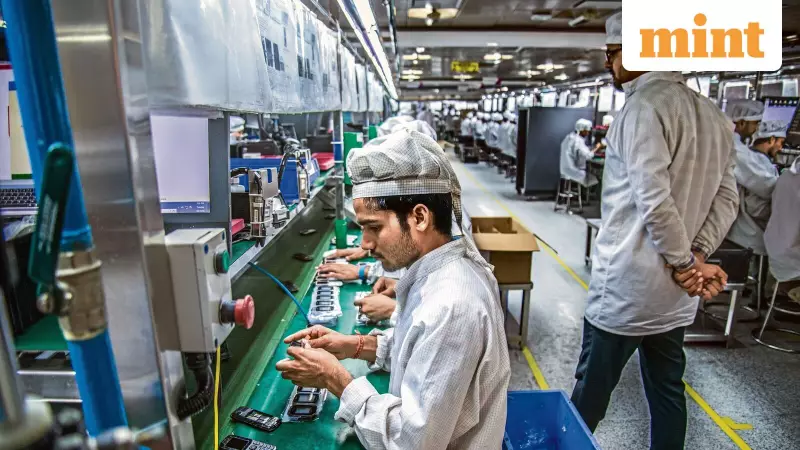
Major Regulatory Reform Unlocks Manufacturing Potential
In a significant policy shift that promises to revitalize India's manufacturing sector, the government has initiated sweeping reforms by withdrawing or amending quality control orders (QCOs) on 76 industrial products. This decisive move, implemented across multiple ministries in mid-November 2025, marks a crucial step toward reducing compliance burdens and enhancing the global competitiveness of Indian manufacturers, particularly micro, small and medium enterprises (MSMEs).
Multi-Ministry Push for Regulatory Rationalization
The reform wave began on November 12, 2025, when the Ministry of Chemicals and Fertilisers abolished QCOs for several critical input materials including terephthalic acid, ethylene glycol, polyester spun yarn, polyester yarn, EVA copolymers, and polycarbonates. This action immediately eased compliance pressures across textiles, chemicals, plastics and downstream manufacturing sectors.
The very next day, on November 13, 2025, the Ministry of Mines issued notifications withdrawing QCOs on base metals and alloys such as aluminum and aluminum alloys, nickel, refined nickel, tin ingots, refined zinc, copper and primary lead. Simultaneously, the Ministry of Steel decided to suspend QCOs on 55 steel products, most of which serve as essential inputs for various industries.
Complementing these efforts, the Ministry of Heavy Industries notified its Machinery and Electrical Equipment Safety (Omnibus Technical Regulation) Second Amendment Order, 2025, effectively pushing QCO implementation forward while maintaining necessary safety standards.
Transforming MSME Competitiveness and Supply Chain Dynamics
The elimination of these regulatory barriers delivers substantial benefits to India's manufacturing ecosystem. According to industry estimates, dropping input-level QCOs can reduce production costs by 8-12% for MSMEs, freeing up crucial capital and easing operational pressures. These cost savings stem from multiple factors including reduced landed costs, elimination of testing delays that typically ranged from 4 to 12 weeks, and restored flexibility in supplier selection.
A compelling case study emerged with the recent withdrawal of the Copper Products (Quality Control) Order, 2023. When this QCO took effect, it severely disrupted supply chains, particularly affecting imports from Japan which accounted for 80% of India's refined copper. Japanese smelters required time to obtain fresh licenses, causing copper imports to drop significantly. Manufacturers responded by substituting raw copper imports with more expensive downstream products like wires, tubes, pipes and sheets, leading to import spikes of 17-49% for these items.
The removal of such restrictive QCOs strengthens MSME supply chains by restoring bargaining power and allowing firms to switch suppliers more easily, diversify sourcing options, and reduce dependency risks. As noted by renowned economist Jagdish Bhagwati, "Competition is the most reliable auditor of quality" - a principle that now guides India's regulatory reform approach.
Institutionalizing Reforms for Long-term Growth
This regulatory overhaul follows recommendations from a high-level Niti Aayog committee that advocated abolishing QCOs for specific input materials. The committee's analysis revealed that nearly half of all QCOs introduced over the past eight years targeted intermediate goods - the essential backbone of production networks.
To prevent QCOs from becoming unintended trade barriers in the future, experts propose institutionalizing a permanent, data-driven QCO Review Framework. This would include implementing mandatory 24-month sunset clauses for every QCO, requiring renewal only after detailed analysis of domestic capacity, import dependency, HS-code trends, supplier concentration, price movements and export competitiveness.
Additional recommendations call for structured MSME consultations, annual QCO impact statements, and shifting the Bureau of Indian Standards toward risk-based, globally aligned standard-setting that focuses regulatory scrutiny on safety-critical final products rather than raw materials.
The recent notifications represent more than bureaucratic updates - they signal a philosophical shift toward a more competitive, export-ready India. With electronics exports growing by over 47% in the first quarter of 2025-26 and smartphone exports reaching a record $2.4 billion in October 2025, these reforms come at a critical juncture for India's manufacturing ambitions.
As the government continues its QCO rationalization agenda, attention now turns to other ministries overseeing significant QCO portfolios. According to Centre for Social and Economic Progress (CSEP) data, the Ministry of Steel alone oversees 310 QCOs, with nearly 68% applying to input materials. Similarly, 161 QCOs exist for machinery and electricals, with 44% covering core industrial intermediaries.
This reform initiative demonstrates India's commitment to creating a more open, rules-based economic order that supports business growth rather than stifling it. By reducing compliance costs, saving time, and easing regulatory burdens, these changes provide the essential levers that could catapult India into the next orbit of industrial expansion as the nation works toward its aspiration of becoming a world-leading economy by 2047.





